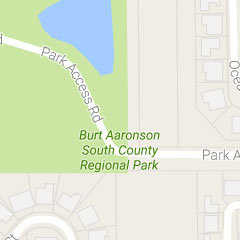Surveying
Overview
Leveling is an important surveying procedure that is performed to determine the exact amount of cut and fill required before beginning any construction. The student teams are asked to perform a leveling survey and determine the cut and fill volume based on the specified grade by using the unit-area method.
Steps
The following are the steps used to compute the cut and fill volume:
- Lay out the given site into squares (also called grids) of optimal size
- Determine the instrument station based on the visibility to all grid intersection points and bench mark
- Uniquely name the grid intersection points
- Setup the instrument
- Based on the benchmark elevation, compute the elevation of all grid intersection points
- Based on the grade elevation, determine cut/fill elevation of each grid intersection point
- Compute average cut/fill volume of each square by taking the average of all four grid point cut/fill elevations and multiplying by the area of the square
- Determine the total net volume by summing up the volume of individual squares
- Convert the net volume to cubic yards
- The students may use the formula as well.
- a site with its extent marked with flags
- a benchmark location along with its elevation
- grade elevation
- recommended stake square size is 10 ft
- The field time should not exceed 30 minutes. The teams are expected to leave the site in 30 minutes.
- The remaining time of the one hour limit shall be used to compute the cut, fill and net volumes.
- The completion will be timed. Time will start before any equipment has been assembled or placed.
- No writing may be done before time begins.
- Time will stop when the team turns in their calculations.
- Failure to complete the task within the 60-minute time limit
- Failure to complete field work in 30-minute time limit
- Using materials that are not allowed
- One (1) standard tripod
- Maximum of three (3) plumb bobs
- One level or total station (see additional rules below)
- Two Philadelphia rods or range poles
- Two standard surveyor’s measuring tapes
- Pencils
- A ruler or straightedge
- An FE-approved calculator
- Neatness of writing and sketches
- Thoroughness and correctness of calculations
- Adherence to standard field note-taking practices
V=∑(hi,jn) (A/4x27) (yd3) (from Ghilani and Wolf 2015)
Where,
(hi,j) = cut / fill elevation at each corner,
n = number of squares to which the corner is common
A = area of the square
Eligibility
Teams may consist of up to five (5) student chapter members.
General Rules
Teams will be provided the following items:
The total duration of the competition is one hour.
A basic surveyor’s field book will be provided for each team to use. No other paper may be used for calculations.
Aside from the provided field book, teams must provide their own materials.
Disqualification
Disqualification will result from:
Materials
The following equipment/material is allowed, but will not be provided on site by the host institution:
Note: A team using an electronic total station may not use a data collector (on-board or separate)
Submittals
Equipment List due March 3, 2017 at 11:59 p.m. EST to 2017asce@fau.edu; Provide school name and details about the equipment being brought to the competition; Bring a field notebook, calculator, and pen/pencil to assigned time.
Judging
The teams will be ranked according to their completion times for the competition. Times will be rounded to the nearest second. Team points will be awarded on a scale of 50 points based on each team’s placement.
In the event of a tie, submitted calculations will be judged according to the following criteria:
Questions
Send questions to 2017asce@fau.edu. Answers will be posted on the Q&A page.


